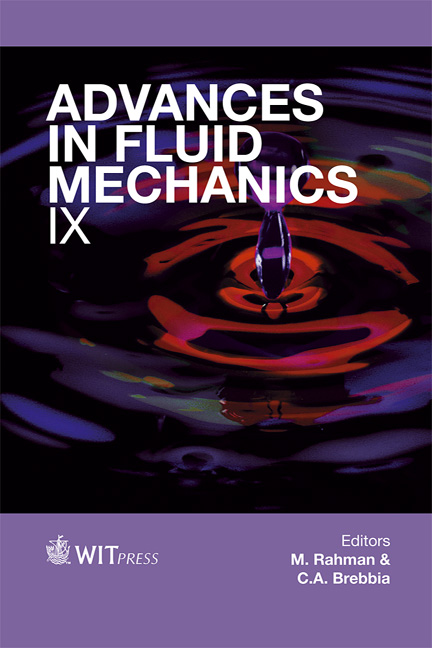An Immersed Boundary Method For Simulating Compressible Viscous Flow In Complex Geometries
Price
Free (open access)
Transaction
Volume
74
Pages
11
Page Range
97 - 107
Published
2012
Size
660 kb
Paper DOI
10.2495/AFM120091
Copyright
WIT Press
Author(s)
B. Jastrow & F. Magagnato
Abstract
This paper presents an immersed boundary method combined with a wall-layer approach implemented into an established flow solver. In the outer flow field, the compressible Navier-Stokes equations are solved using an approximate Riemann Solver whereas simplified boundary-layer equations are solved near the wall. Turbulence is accounted for by the one-equation model of Spalart-Allmaras in the outer flow region and by a mixing length eddy viscosity model with near wall damping in the wall layer. Computations performed for various test cases show good agreement with reference data found in literature. Keywords: immersed boundary method, wall-layer model, compressible flow. 1 Introduction Body-fitted grid generation for simulating flow in complex geometry can be very cumbersome especially when using a block-structured solver. Therefore the Cartesian-grid immersed boundary method (IBM) offers an interesting approach since automatic mesh generation can be realized easily. Furthermore, due to smoothness and orthogonality, Cartesian grids offer high accuracy and efficiency. In the IBM a complex geometry is immersed into a regular Cartesian grid. The effect of the body on the flow is mimicked by the imposition of proper boundary conditions that act as forcing conditions [1, 2]. Several applications of the IBM use a linear interpolation for setting the boundary conditions as proposed in [1]. Their validity is therefore only given for grids resolved down to Δ 1. For flow of high Reynolds number these restrictions cannot be held in accordance with acceptable computing time. With
Keywords
immersed boundary method, wall-layer model, compressible flow.





